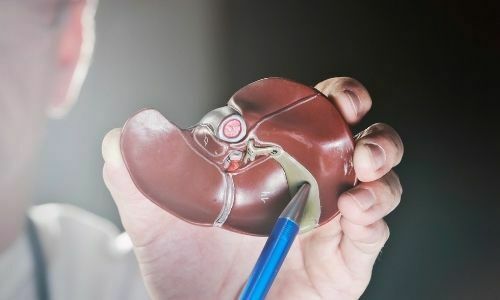 In the vast majority (80%) of patients with gallbladder stones, there is no finding that may belong to the stone. However, when patients with gallstones are followed up, it is known that half of these patients become symptomatic over time. Gallbladder stones can cause the following symptoms;
In the vast majority (80%) of patients with gallbladder stones, there is no finding that may belong to the stone. However, when patients with gallstones are followed up, it is known that half of these patients become symptomatic over time. Gallbladder stones can cause the following symptoms;
Pain: It is felt as a pain that is felt under the ribs in the upper-middle and/or upper right side of the abdomen, intensifying, may spread to the shoulder and back, and may be accompanied by nausea and vomiting. Sudden pain in the form of colic usually occurs after the contraction of the gallbladder after a meal. After the contraction of the gallbladder, the stone in the bladder slides into the neck region of the bladder and gets stuck here, and the stretching of the gallbladder and the neck of the bladder causes pain. The pain can last from a few minutes to several hours.
Sometimes, small bladder stones can cause pain by falling into the biliary tract. In this case, additional findings such as darkening of urine color and lightening of stool color may occur. When inflammation is found with the stone, jaundice, chills, chills and fever can be seen. It should be noted that the symptoms may be milder and atypical in the elderly.
Inflammation of the gallbladder (Inflammation): Sometimes stones can cause inflammation in the gallbladder, and this is a mild or moderate pain felt as blunt and fullness in the gallbladder area, accompanied by nausea, vomiting, chills, chills and fever. It can create a picture that can range from severe pain to severe pain. This picture is known as acute cholecystitis and is a serious condition.
Jaundice: When gallstones fall into the biliary tract, they can prevent bile from flowing into the intestine, causing yellowing of the whites of the eyes and skin, darkening of the urine color and faecal coloration (yellow-dirty dark white stool). This condition is called obstructive jaundice and is due to the increase in the blood level of the pigment called bilirubin in the bile, which cannot flow into the intestine, and is excreted in excess in the urine.
Pancreatitis: When gallstones fall into the biliary tract, it can cause obstruction in the pancreatic duct along with the bile duct, causing acute pancreatitis (See the anatomical relationship of bile and pancreatic ducts). In acute pancreatitis, the general condition of the patient deteriorates rapidly with severe pain felt in the middle and upper parts of the abdomen, which can spread to the sides in the form of a belt and spread to the back. The patient needs hospitalization, monitoring and treatment, and can be fatal if left untreated.


 In Western society, it is believed that gallstones are more common in middle-aged, white-skinned, obese and multiparous women. (Female, Fat, Forty, Fertile, Fair). Stone or sludge is detected in the gallbladder in approximately 1/3 of people over 60 years of age. Although biliary sludge formation in the gallbladder is common during pregnancy, most of them disappear spontaneously after pregnancy. Rapid weight loss can lead to the formation of gallstones in some people.
In Western society, it is believed that gallstones are more common in middle-aged, white-skinned, obese and multiparous women. (Female, Fat, Forty, Fertile, Fair). Stone or sludge is detected in the gallbladder in approximately 1/3 of people over 60 years of age. Although biliary sludge formation in the gallbladder is common during pregnancy, most of them disappear spontaneously after pregnancy. Rapid weight loss can lead to the formation of gallstones in some people. In the vast majority (80%) of patients with gallbladder stones, there is no finding that may belong to the stone. However, when patients with gallstones are followed up, it is known that half of these patients become symptomatic over time. Gallbladder stones can cause the following symptoms;
In the vast majority (80%) of patients with gallbladder stones, there is no finding that may belong to the stone. However, when patients with gallstones are followed up, it is known that half of these patients become symptomatic over time. Gallbladder stones can cause the following symptoms;
 Since the majority of patients with gallstones do not develop any symptoms, it is recommended to monitor patients at regular intervals.
Since the majority of patients with gallstones do not develop any symptoms, it is recommended to monitor patients at regular intervals.




